Review: Tulpar T6 V3.2.2 Notebook – A Powerhouse with Minor Flaws
The Tulpar T6 V3.2.2 is a gaming laptop that looks impressive on paper with high-end specs, strong performance, and modern features. In practice, it presents itself as a well-balanced mix of power, functionality, and design—though with a few quirks that might not suit everyone. In this review, we’ll take a close look at the device with the goal of providing a comprehensive and practical overview, clearly pointing out both strengths and weaknesses.
The reviewed device was a temporary loan unit, which was returned to Tulpar after the test phase. There was no influence on the content of this review; publication was initiated independently. Many thanks to Tulpar for the trust and for providing the test unit.

1. Build Quality & Design
Right out of the box, the T6 V3.2.2 feels solid and well-made. The materials used give it a premium feel—none of the cheap plastic vibes that are common in some gaming laptops in this price range. The matte finish looks clean and helps hide fingerprints, even with frequent use. The overall design is tidy and high-quality. Panel gaps are even, nothing rattles, and nothing feels loose or improvised.
Torsional rigidity is also impressive. Even when applying pressure or lifting the device from a corner, the chassis stays stable and doesn’t flex. That speaks to good construction and material choices. The display hinges are smooth but firm—they allow one-handed opening and hold the screen in place securely. It’s a small detail that makes a big difference in everyday use.
Visually, the Tulpar T6 V3.2.2 takes a more understated approach. No over-the-top gaming design, flashy logos, or RGB strips everywhere. Instead, a clean, modern design that fits just as well in a gaming setup as it does in a meeting room. Gamers will appreciate the subtle style with a bit of edge, while business users will find it neutral enough to stay under the radar.
The only real design drawback is the keyboard: the keys are relatively small. Anyone who types a lot or has larger hands will notice this right away. The key travel is solid, the tactile feedback is precise, and the build quality of the keyboard is very good overall. But the compact layout often leads to typos—especially if you’re used to fast touch-typing. Coming from a traditional desktop keyboard or a business laptop like a ThinkPad or EliteBook, you’ll likely need some time to adjust.
Another mixed aspect is the RGB backlighting. At first glance, it looks great—uniform lighting, different color modes, and presets like rainbow or static light. But: it’s not true per-key RGB. You can’t assign individual colors to specific keys. So if you rely on color-coded hotkeys for games or shortcuts, you’re out of luck. For streamers, content creators, or heavy gamers, that’s a bit of a letdown. The lighting options are fine, but not very flexible.
2. Display
The screen features a Full HD (1920×1080) resolution with noticeably smooth visuals, especially during fast-paced games or scrolling. While the manufacturer doesn’t specify a refresh rate, the performance and fluidity strongly suggest it’s at least a 144 Hz panel—which is expected in this performance class.
Colors appear vibrant, with decent blacks and contrast. Viewing angles are stable. For daily use, gaming, and streaming, the display is more than adequate.
However, it quickly reaches its limits with color-critical work. Tasks like professional photo editing, color grading, or precision video work are held back by limited color accuracy and gamut coverage. As with most gaming panels, AdobeRGB and DCI-P3 are only partially supported. If exact color representation is a must, an external calibrated display is the way to go.
3. Everyday and High-Load Performance
Under the hood, the Tulpar T6 V3.2.2 packs an Intel Core i7-13700HX, part of Intel’s 13th-gen high-end mobile CPUs. With 16 cores (8 performance + 8 efficiency), it handles not just gaming but also demanding tasks like video editing or virtualization.
Paired with it is an NVIDIA GeForce RTX 4070 Laptop GPU. Together with DLSS 3.5, this setup delivers desktop-level performance in many games. It’s powerful and relatively efficient. You also get 32 GB of fast DDR5 RAM and a high-speed NVMe SSD.
In real-world use, the system is highly responsive. Apps launch instantly, and multitasking—even with heavy tools like Photoshop, Discord, a browser full of tabs, and game streaming—runs smoothly.
A look at the Control Center shows the CPU hitting up to 84°C under full load at 3.3 GHz, while the GPU stays cooler around 63°C—indicating good thermal separation. The fans do their job: 4270 RPM on the CPU side, 2962 RPM for the GPU. Cooling is effective, but not silent—we’ll cover noise levels next.
See also: https://dataholic.de/unboxing-the-tulpar-t6-v3-2-2-a-detailed-unpacking-description/
4. Noise Levels
During light use (browsing, office work, YouTube), the system averages around 47 dBA. Under full load—like gaming or rendering—it can hit up to 58 dBA. That’s noticeable, but not an annoying whine. The fan curve is well-tuned and avoids abrupt changes.
5. Gaming Benchmarks (1080p)
This is where the notebook shines. With DLSS 3.5 enabled, here are the results:
- Cyberpunk 2077: 146 FPS
- Diablo IV: 133 FPS
- Minecraft RTX: 65 FPS
- Jurassic World Evolution: 190 FPS
- Wukong: 46 FPS
- Ark: Survival Ascended: 41 FPS
- Flight Simulator 2020: 130 FPS
Without DLSS:
- CS2: 200 FPS
- PUBG: 176 FPS
- Baldur’s Gate 3: 107 FPS
- Red Dead Redemption 2: 76 FPS
These numbers show the system can easily handle even demanding AAA titles. With DLSS 3.5, the RTX 4070 really stretches its legs.
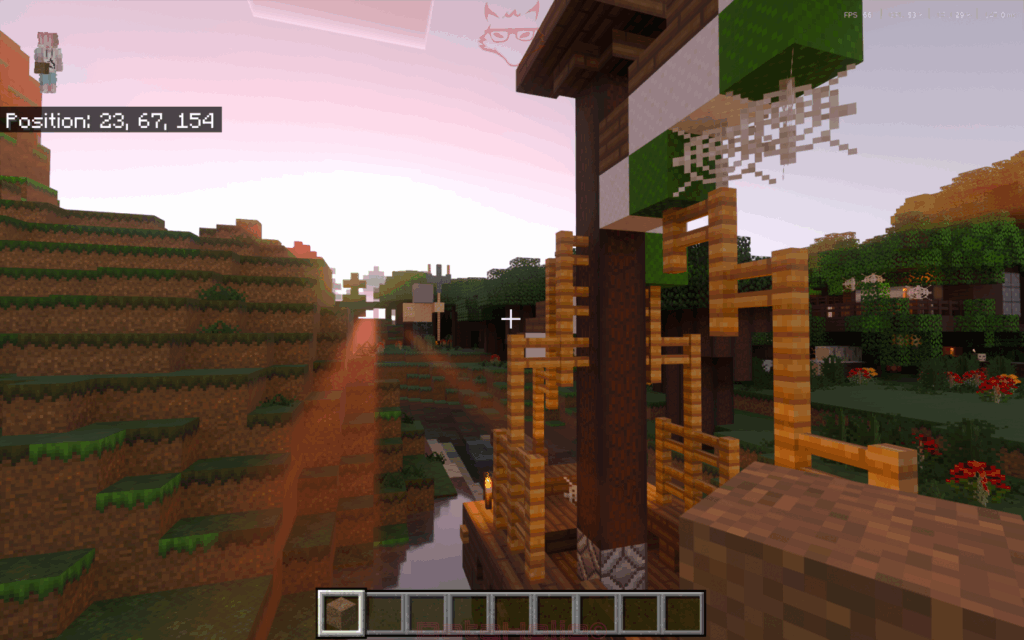




6. Synthetic Benchmarks
The T6 V3.2.2 performs well in benchmarks too:
- 3DMark TimeSpy: 10,514 points
- Furmark: 7,650 points
- PCMark: 6,765 points
- Cinebench R24:
- Multi-Core: 862 points
- Single-Core: 108 points
- GPU (System Requirements): 11,224 points
The GPU scores place this laptop at the high end—comparable to some desktop GPUs. The CPU performs well in multi-core workloads and is just behind Apple M1/M2 chips in single-core tasks.
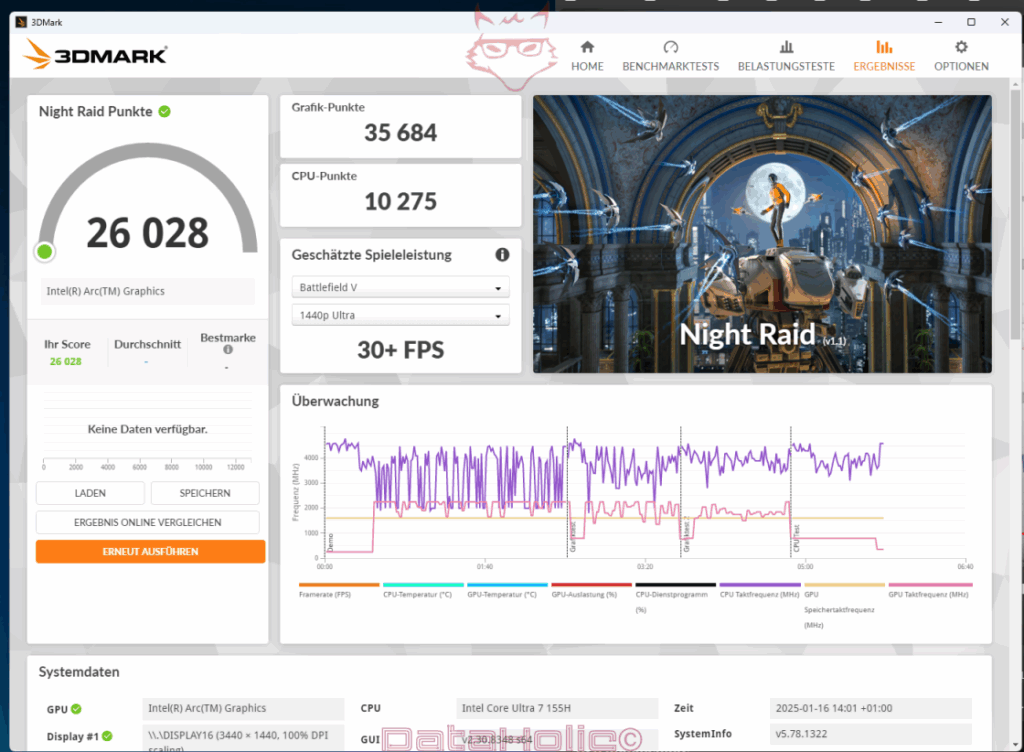

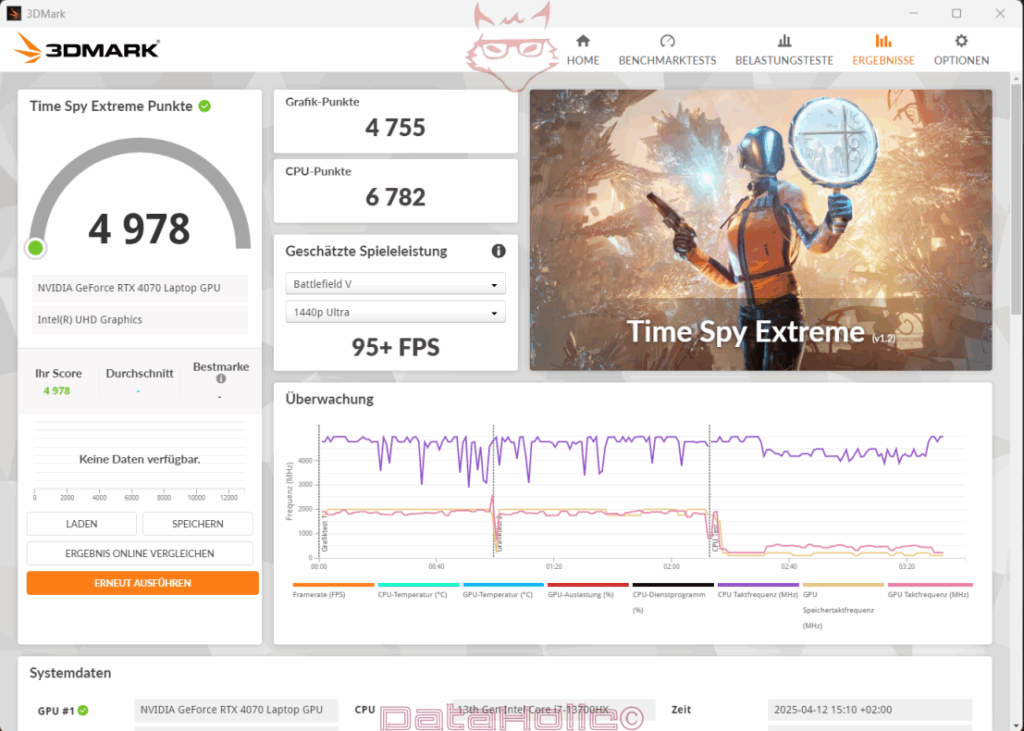
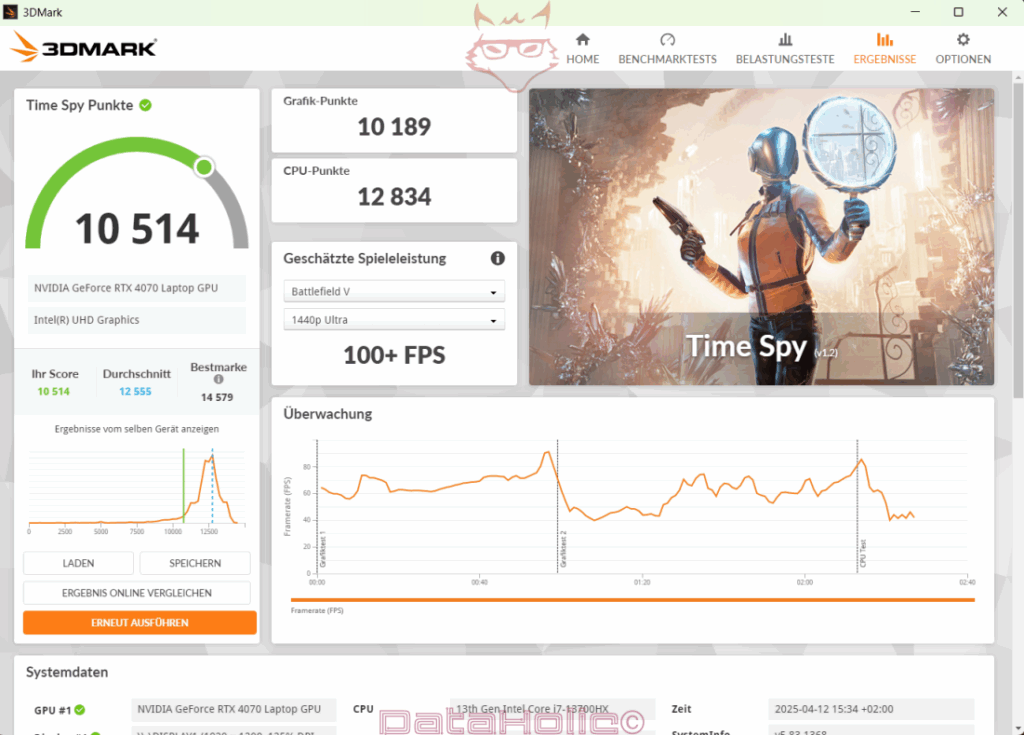
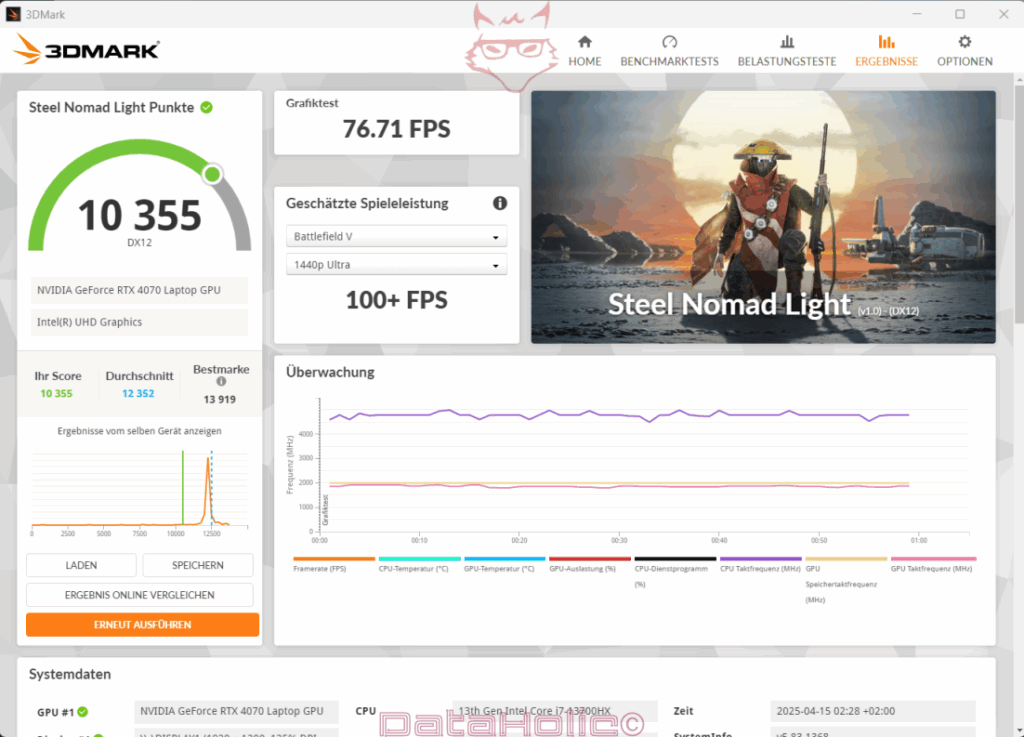

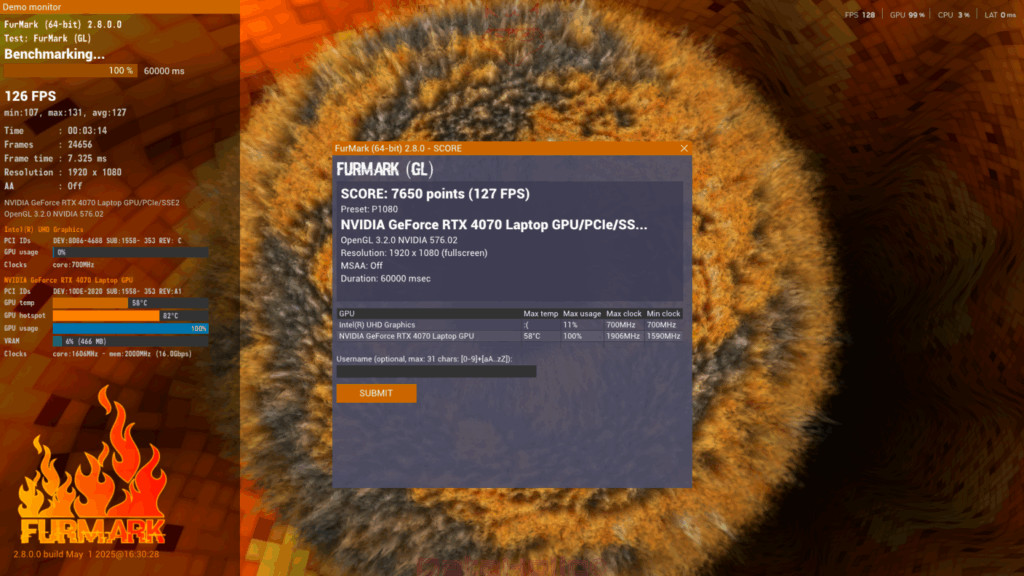
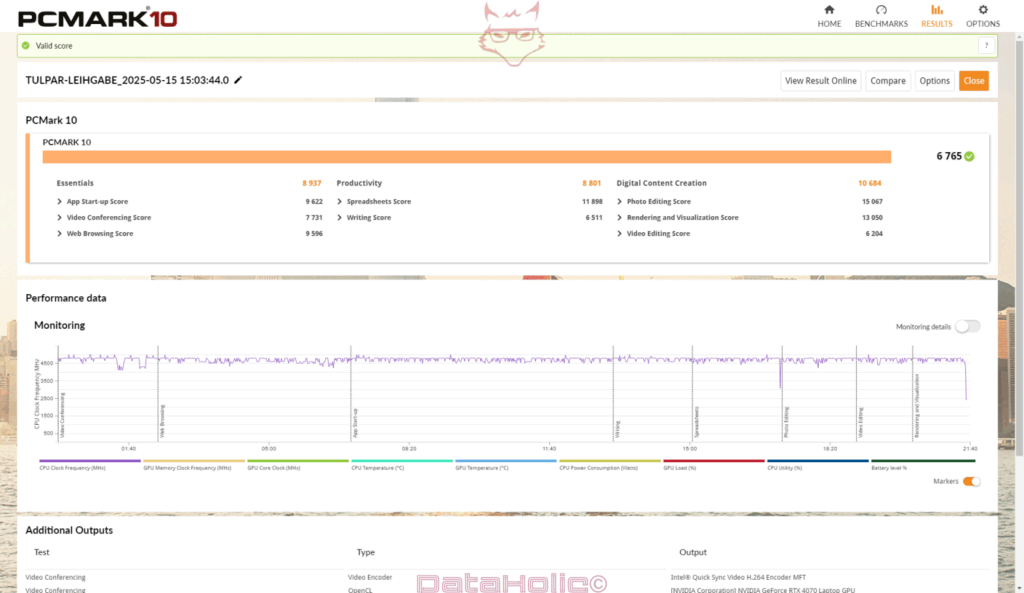
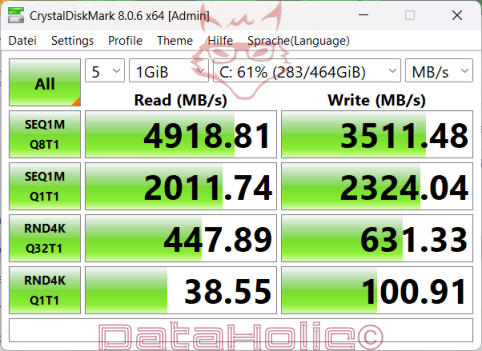

7. SSD Performance (CrystalDiskMark)
The NVMe SSD delivers strong numbers:
- SEQ1M Q8T1: Read 4918 MB/s, Write 3511 MB/s
- SEQ1M Q1T1: Read 2011 MB/s, Write 2324 MB/s
- RND4K Q32T1: Read 447 MB/s, Write 631 MB/s
- RND4K Q1T1: Read 38 MB/s, Write 100 MB/s
This results in quick boot times, fast file transfers, and rapid game loading. Windows boots up noticeably fast.
8. Software & Features
The included Control Center is feature-rich. You can manage performance modes, RGB lighting, fan curves, and macros. Profiles can be saved and switched quickly. You can also set up macros for both keyboard and mouse.
The RGB controls are intuitive, though again—not true per-key RGB. A missed opportunity, but not a dealbreaker.
Nice touch: there’s a keyboard sleep timer that turns off the backlight after inactivity. Saves power and is easy on the eyes in the dark.
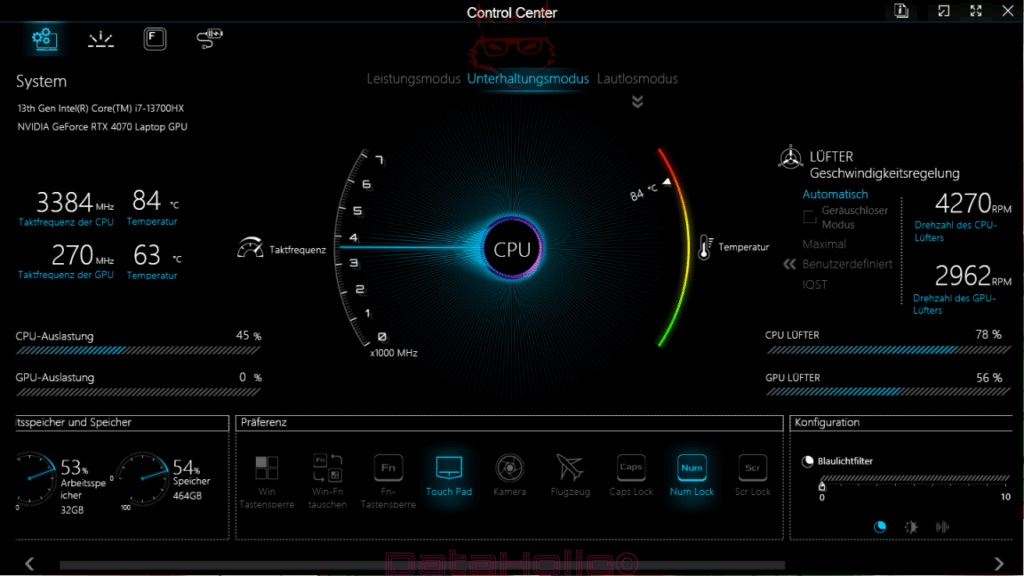

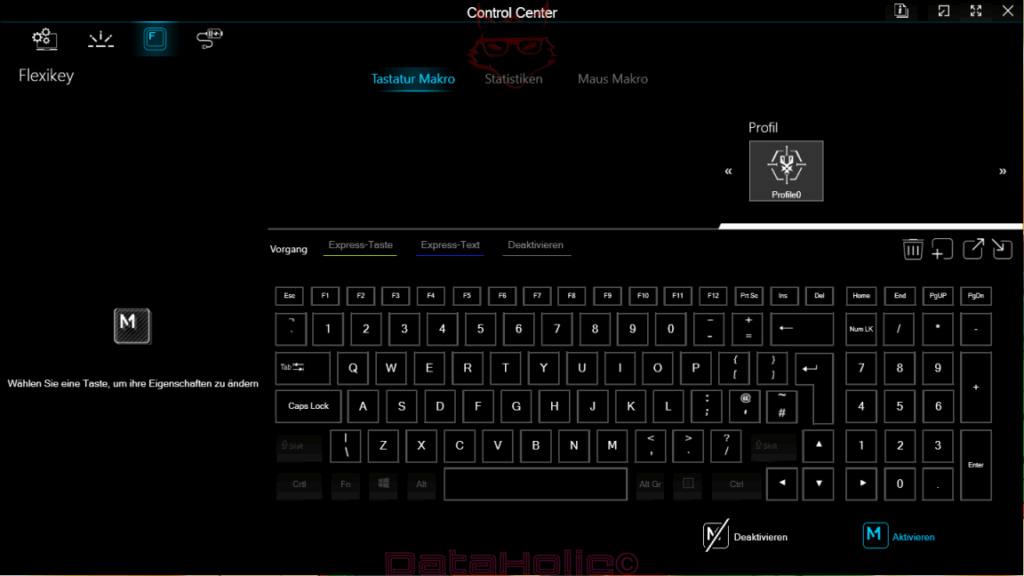
9. Maintenance & Service
A standout feature: Tulpar offers a lifetime cleaning and checkup service. That’s rare at this price point and great for users who aren’t into DIY maintenance. If you plan to keep your device for years, this adds real value.
Final Verdict
The Tulpar T6 V3.2.2 delivers across the board and positions itself as a real all-rounder in the high-end segment. With powerful hardware, smart thermal design, and robust software features, it’s a strong package—not just for gamers but also for power users who need top performance on the go.
The CPU/GPU combo has the muscle to run the latest games smoothly on high settings and also handle video production, software development, and 3D rendering with ease. DLSS 3.5 brings not just speed but a boost in image quality too. And the cooling system keeps things in check without getting obnoxiously loud—a balance many laptops don’t manage.
The SSD is fast, the system is responsive, and multitasking is seamless. Build quality holds up in daily use: sturdy, stylish, and refreshingly subtle for a gaming device. The Control Center is well-designed, and custom fan/macro profiles help you get the most out of the hardware. The lifetime checkup service reinforces Tulpar’s focus on longevity.
Of course, there are a few drawbacks. The keyboard is solid but a bit cramped for heavy typists, and the lack of true per-key RGB might disappoint users with specific lighting needs. But those are minor issues that only matter in certain use cases.
Overall, the Tulpar T6 V3.2.2 is a strong choice for demanding users who value performance and thoughtful design. It’s not a mass-market product—it’s for users who know exactly what they want. And here, they’ll find it delivered in convincing quality.
